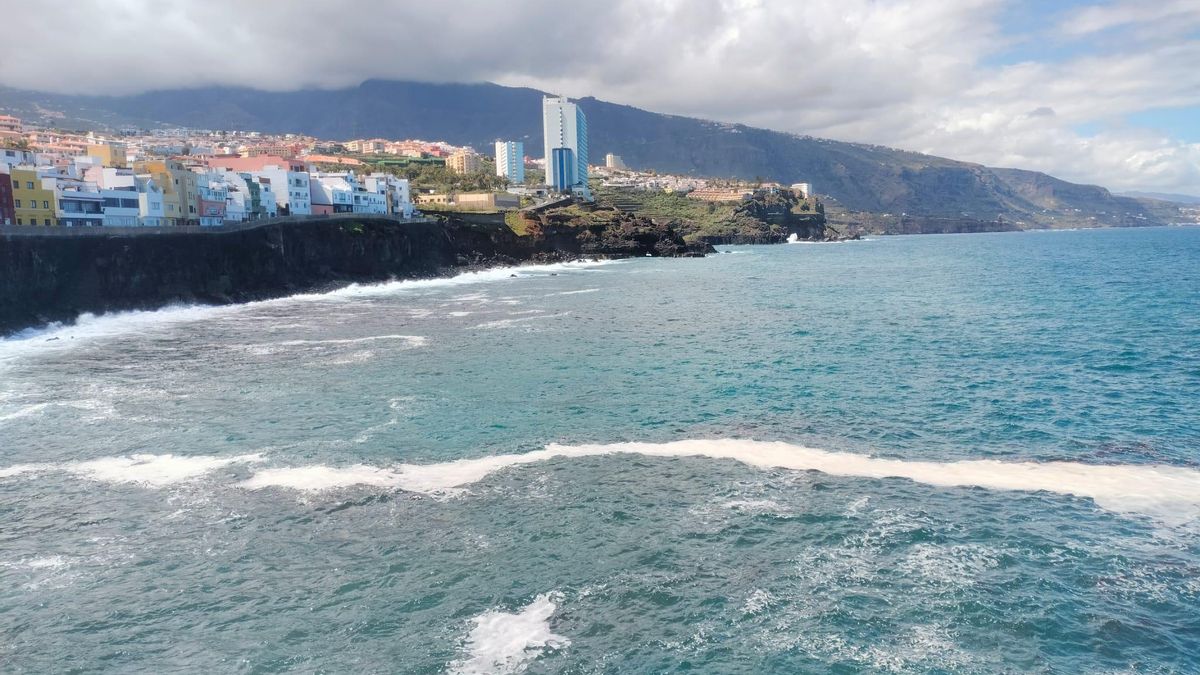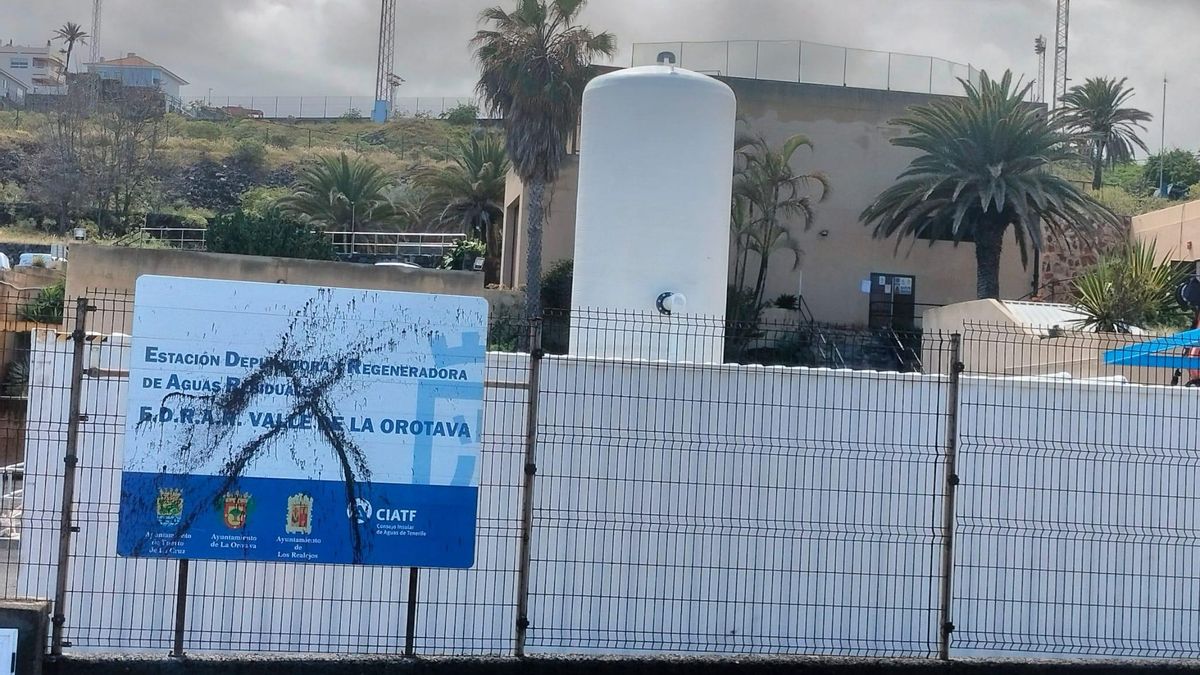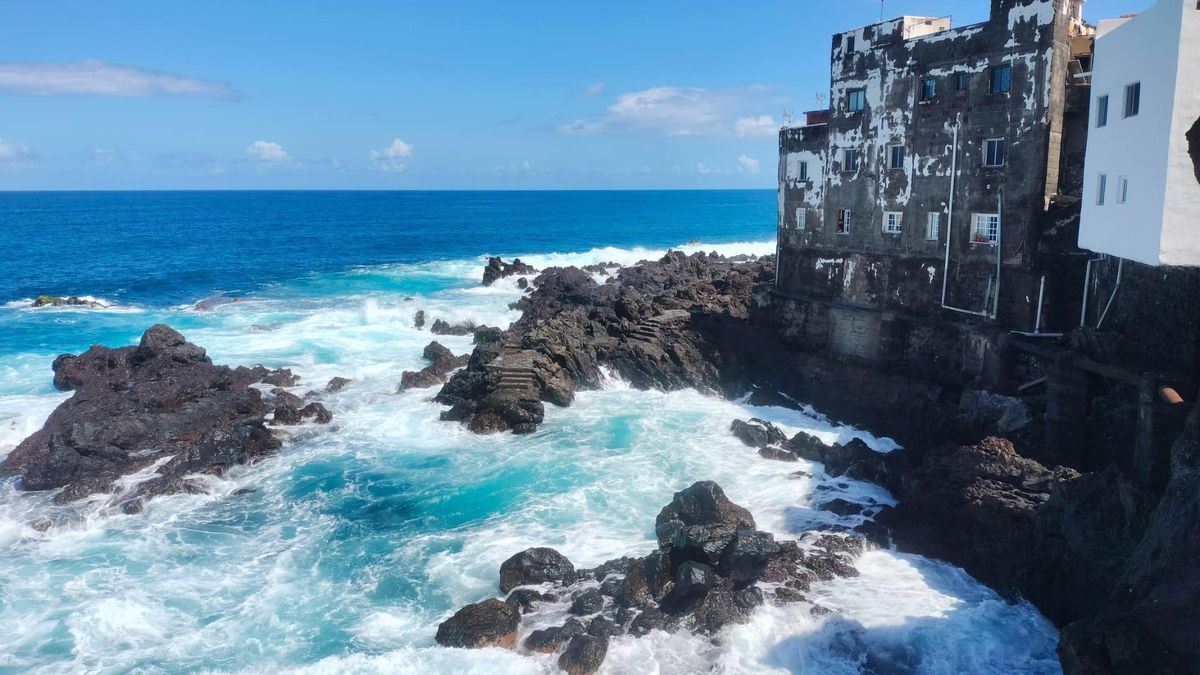Almost a year has passed during which swimming has been discouraged at the main beach of the tourist town of Puerto de la Cruz, the economic driver of northern Tenerife. The fines imposed on the Insular Water Council, dependent on the Tenerife Cabildo, seem little more than a minor traffic fine that can be halved if paid in advance and not contested. Moreover, the body with the most responsibilities for monitoring the quality of water discharged into the sea has contested the two fines processed against its management, each amounting to 200 euros, imposed by the Government of the Canary Islands’ Environmental Protection Agency, on the grounds that they are unfounded and that it did not violate any of the ten conditions set regarding the quality of water at Playa Jardín.
This bathing area effectively comprises three beaches: the Castle Beach, El Charcón (or Medio), and Punta Brava (or María Jiménez). The latter boasts the best sand and dimensions and is closest to the discharges that have prompted a local platform, damaging the economy of the businesses in this famed port neighbourhood, aggravating local residents and frustrating many users from July 2024 until mid-June this year, when swimming was no longer discouraged following 16 analyses with acceptable indicators. However, many tourists and some “locals” continued to swim without much hesitation.
What stands out about these two fines is that, despite the existence of Public Health reports warning about the poor quality of water at Playa Jardín since February 2022 (with a follow-up in April of that year) and requests for action from the council (which the PSOE claims were never communicated to them by ACP councillors, their partner until the censure of August 2024), the Environmental Agency, at the request of the Ministry of Ecological Transition (PP), did not act against the Insular Water Council until late last year (for “non-compliance with the discharge authorisation into the sea from the Punta Brava outfall”) when bathing had already been discouraged since July. This continued to mid-2025 (for the same reason, but related to the regional sewage treatment plant located in this neighbourhood) with a second case initiated due to high levels of water contamination. To add insult to injury, the breakage of the outfall was reported back in July 2020, yet no case was opened against the competent administration for four years—only after the announcement of a judicial investigation following the lodged complaints.

In other words, the agency responsible for overseeing the environment in the Canary Islands, under the Ministry of Territorial Policy, Territorial Cohesion and Water (that’s its name), although it often acts at the request of Ecological Transition (as in this case), did not open a case against the Cabildo, the principal authority, for the crucial breakage of the outfall. However, it did open and close multiple cases against the port town council for amounts much greater (and already paid), which are likely to seem trivial when considering the consequences of a year like the one experienced by the Punta Brava neighbourhood, the local businesses that rely on the influx of bathers (and not solely on the presence of Loro Parque right next door), the tourists, hotels, residents, regular users, and something more ethereal but crucial: the city’s image, which largely created mass tourism in Spain in the 1960s.
Why didn’t Ecological Transition intervene since 2020?
Therefore, one must question whether the Environmental Agency received information from the Ministry of Ecological Transition (then managed by the socialist José Antonio Valbuena) about the breakage of the outfall in July 2020 or if it did so almost four and a half years later when it opened the first case, either due to the complaint to the Public Prosecutor’s Office or due to the controversy, which had already been in the media for months. According to sources from the Agency, they always act upon being notified by the aforementioned ministry, as cannot be otherwise in this case.

Additionally, the Environmental Agency explained this Friday to Canarias Ahora that the relatively low amounts stem from the Cabildo having “authorisation and equipment” for the management of these wastes. Specifically, these two fines were imposed because, in one case, there were losses and discharges before the flow reached the outfall, and in the other due to overflow from rainfall. However, the Insular Water Council has contested the fines, asserting that they should not have been imposed, thereby defending its overall management. The Agency does emphasise that the Council has been fully engaged in attempting to resolve the situation, processing the necessary and still pending works (beyond those executed by the council to redirect treated water from the treatment plant to the nearby La Cruz Santa reservoir for agricultural irrigation).
In the case of the town council, the Environmental Agency opened three cases of complaint in 2018 (when the PP and CC were in power in Puerto de la Cruz, with CC managing the Canary Islands as a minority following the split with PSOE at the end of 2016 and the pact between nationalists and socialists in the Tenerife Cabildo). Each of these cases, relating to the situation at the El Caletón overflow, Playa Chica (Punta Brava) and San Telmo, resulted in fines of 3,000 euros (totaling 9,000, which were paid at the time by the local corporation). Furthermore, there was another case in 2021 for the Playa Chica overflow, with a fine of 1,800 euros which was paid in advance, and another for the same amount (1,800) in 2022, also settled. Thus, the total amounts to 12,600 euros over the past seven years compared to the 400 euros for the Cabildo.

However, based on information provided by the Environmental Agency to Canarias Ahora, there are currently up to eight ongoing cases against the local corporation from 2024 and 2025, five of which relate to discharges of wastewater into the sea at the following locations: numbers 11 and 13 on Pelimar Street, the EBAR of El Caletón, the EBAR of Playa Jardín, the EBAR of Playa Chica, and that of San Telmo. The other three pertain to unauthorised discharges to the sea from the EBAR of Playa Jardín, another from Playa Chica, and one from El Caletón.
Meanwhile, Playa Jardín is currently welcoming hundreds of visitors on hot, picture-perfect days, while the Cabildo awaits the resolution of its appeal against the fines amounting to 400 euros after eleven months of discouraging swimming.















